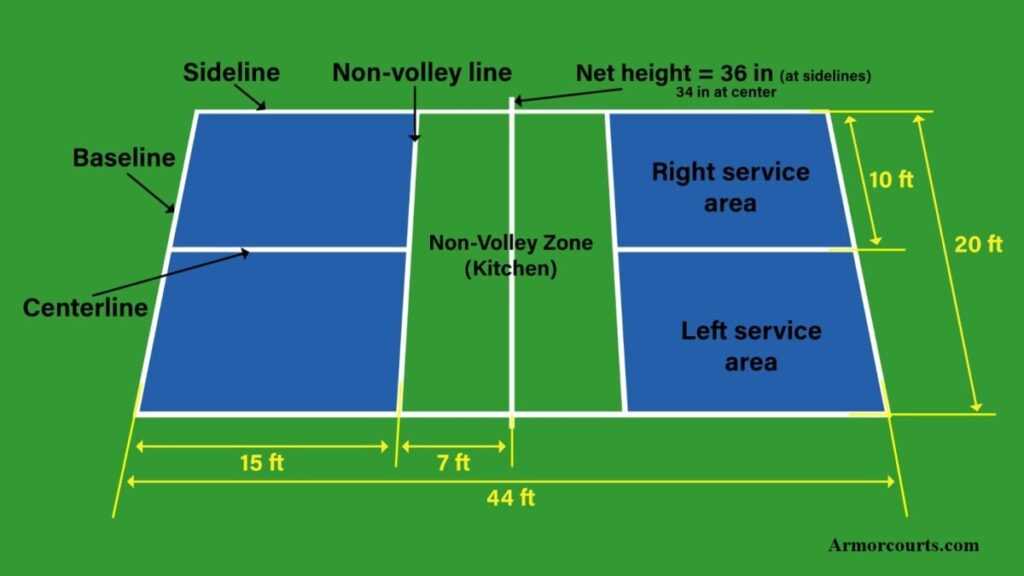Pickleball Court Construction-- Beginning Structure Your Perfect Court Today
Sustainable Practices in Pickleball Court Building You Need To Know
As the popularity of pickleball continues to climb, so as well does the demand for sustainable practices in court building. This approach not just addresses ecological worries however additionally boosts the durability and capability of the courts. From selecting green materials to applying effective drainage and energy-saving illumination services, there are numerous techniques to think about. The effect of these methods prolongs far past the court itself. Comprehending how each aspect contributes to an extra lasting future invites further expedition right into the complex balance in between recreational growth and environmental stewardship.
Choosing Eco-Friendly Products
Picking environmentally friendly products is an important step in the construction of lasting pickleball courts. The selection of sustainable products not just reduces ecological impact however additionally boosts the durability and performance of the court. Secret products include recycled rubber for the surface, which supplies outstanding longevity and shock absorption while drawing away waste from land fills.
Additionally, utilizing in your area sourced products lowers transportation emissions and supports regional economies. Pickleball court construction. Making use of indigenous woods for secure fencing and seating can provide a lasting visual while making sure durability against the components.
Incorporating absorptive materials for court structures can even more add to sustainability by enabling all-natural water drainage and decreasing runoff. These choices not just secure neighborhood communities but also advertise healthier play settings.
Reliable Drain Solutions
While the selection of eco-friendly products is vital, applying effective drain services is similarly critical for keeping sustainable pickleball courts. Correct drain not just safeguards the court surface area from water damages but likewise decreases erosion and overflow, advertising ecological integrity.
Reliable water drainage systems can include absorptive paving, which enables water to infiltrate the ground instead than merging on the surface area. This lowers the possibility of standing water, which can cause mold and mildew and other maintenance issues. Furthermore, including purposefully placed water drainage channels and swales can direct excess water away from the court area, making sure a dry playing surface and avoiding soil erosion.
Making use of indigenous plant life in the landscape design around the courts can better boost drain by taking in excess water and lowering runoff. These plants require much less watering and promote biodiversity, aligning with sustainable practices.
Additionally, it is crucial to on a regular basis keep the drain system to guarantee its long-lasting effectiveness. This consists of cleaning debris and surveillance for clogs. By prioritizing efficient drain options, pickleball court producers can dramatically add to the sustainability and durability of the center, ultimately benefiting both gamers and the environment.
Energy-Efficient Lights Options
As the demand for pickleball proceeds to expand, integrating energy-efficient lights options right into court design has actually ended up being increasingly essential for sustainability. Conventional illumination systems often eat excessive power, adding to higher functional costs and ecological influence. Consequently, adopting contemporary, energy-efficient technologies is important for both brand-new building and constructions and improvements.
LED (Light Emitting Diode) illumination stands apart as a premier you can check here choice as a result of its durability and energy financial savings advice (Pickleball court construction). Contrasted to conventional illumination, LEDs use about 75% less power and can last up to 25 times longer, considerably reducing upkeep prices. Moreover, the directional nature of LED lighting decreases light pollution, ensuring that lighting is concentrated on the court rather than surrounding locations.

Lasting Surface Area Alternatives
Exploring sustainable surface options for pickleball courts has gotten traction among gamers and builders alike. The emphasis on environment-friendly products not only straightens with the expanding ecological awareness yet likewise enhances the efficiency and toughness of the courts.
One popular alternative is using recycled rubber, which can be sourced from used tires. This product supplies exceptional shock absorption, minimizing the danger of injuries for gamers while promoting sustainability. In addition, modular tiles made from recycled plastics use another sensible alternative. These tiles are easy to set up and change, and their convenience enables different court arrangements.
Natural lawn courts are also arising as a sustainable selection, advertising biodiversity and minimizing the heat island result. They require regular upkeep and water, which might not line up with all sustainability goals.

Water Preservation Techniques

One more effective method includes the installment of rain harvesting systems. These systems store and collect rainwater for use in maintaining court surfaces and landscape design. This strategy not only preserves drinkable water yet likewise minimizes reliance on community resources.
In addition, using drought-resistant landscape design around the courts is vital. Indigenous plants need less water and are much better adjusted to local environment problems, therefore lowering general water intake. Additionally, using efficient irrigation systems, such as drip irrigation, guarantees that water is delivered straight to plant origins, decreasing evaporation and waste.
Conclusion
Incorporating lasting techniques in pickleball court construction considerably adds to ecological conservation and resource performance. By focusing on these techniques, the building of pickleball courts can straighten with wider environmental objectives while promoting longevity and performance within neighborhoods.
As the appeal of pickleball proceeds to climb, so too does the requirement for lasting techniques in court building and construction.Choosing eco-friendly materials is an essential action in the building of lasting pickleball courts. By focusing on energy-efficient lighting choices, pickleball court builders can add to a much more lasting future while fulfilling the needs of stakeholders and players alike.Including lasting surface area choices not only boosts the performance of pickleball courts but likewise paves the way for applying reliable water conservation methods.Including lasting methods in pickleball court building and construction additional info dramatically adds to environmental conservation and resource performance.